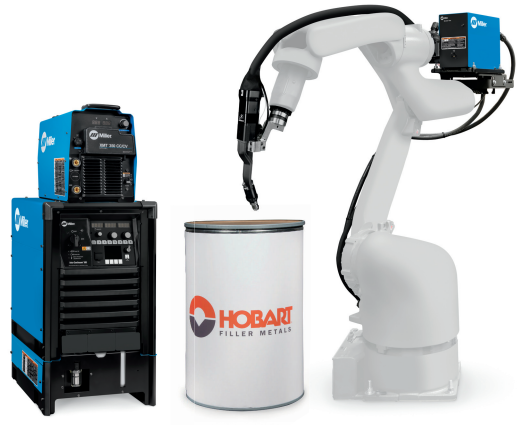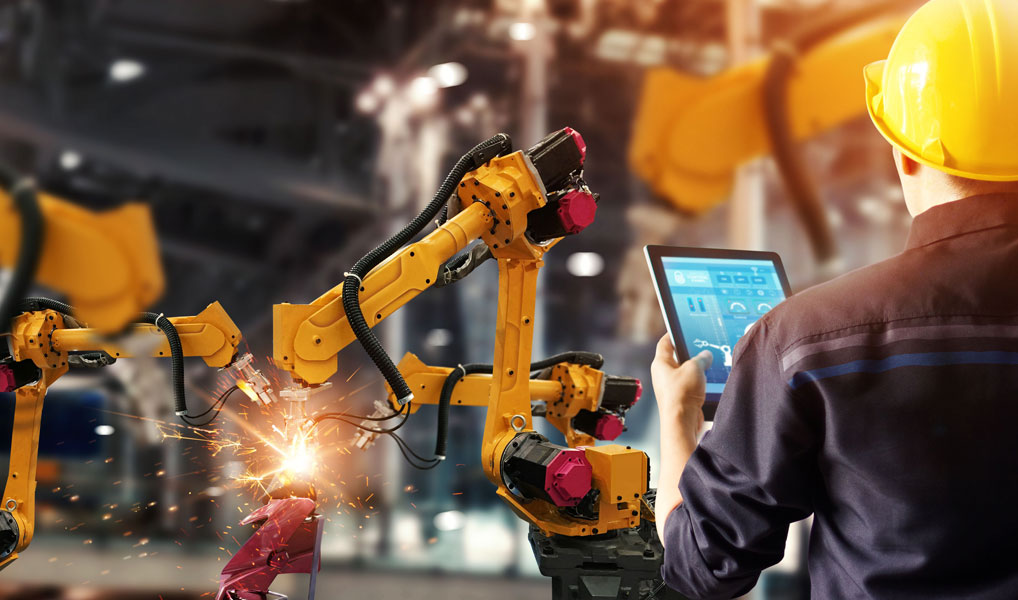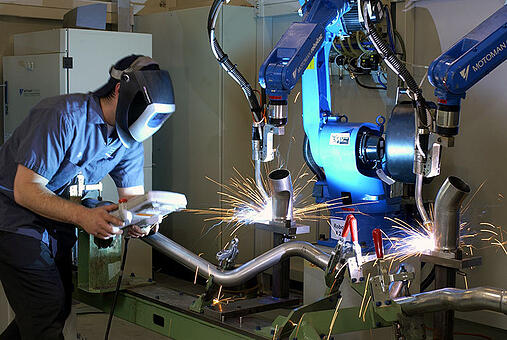Working alongside robots seems like an idea from the future. But cobots (collaborative robots) are now commonly used across a slew of industries including manufacturing, industrial, service, agriculture, and medical. In fact, they’ve been around since 1996, but are now gaining popularity because of advancements in technology and the need to meet demand and improve quality. Cobots can provide relief in the face of labor challenges, as they can handle a variety of repetitive, burnout prone tasks, allowing flexibility and adaptability as business needs change. They’re also cost effective and allow workers to focus their attention on other meaningful tasks such as quality control.
Cobot History in Manufacturing
The first cobot, invented in 1996 by Edward Colgate and Michael Peshkin, was a pioneer of its time. The first generation cobot evolved because of the concerns of GM managers over worker safety. Though some automation was in place at the time, workers were still performing strenuous lifts in order to hand the work over to the robots. Robotics engineer Prasad Akella and staff engineer for GM at the time put it simply. “ If you tried doing something as simple as picking up and installing a 40-pound car battery, one a minute for eight hours a day, 200 days a year, your back is going to start feeling very sore.” This really illustrated a demand for automation and the impact on worker longevity.
There had to be a way to take the physical load off the workers back, while still leaving them active in their positions. This was a critical point. Workers were at first concerned these new inventions would replace them. However, after some time and experimentation, they realized the robot was there to assist and not replace them. The cobot could help them do their job with more precision, and with less risk to serious injury. This would begin the age of human and machine working together as a team.
Cobots were initially designed to possess no internal source of motive power to ensure worker safety and promote productivity. This means the robot was not capable of performing an action on its own— a human must tell it what to do by remote control. This allowed humans to work alongside robots in a cooperative manner. However, today’s robots are showing more human like characteristics and awareness of their environment than ever before.
Cobots, Automation, and Welding Today
Automation is becoming more and more prevalent in the welding industry. Robotic welders are seeing a rise in popularity with their ability to lay a consistent weld every time, void of human error. This increase in accuracy, efficiency, and productivity leads to improved quality and a considerable reduction in production costs. If the work at hand is repeatable, it can benefit from some type of robotic assistance.
Robotic systems play a role in all types of welding processes. Mig, tig, and laser welding are all options for automation. Whether you need a smaller all in one solution that is easy to install or a larger automation system integrating multiple components, there is a system for every use.

| • | Automated MIG Welding- a single-wire, high-deposition, automated MIG welding system significantly boosts welding productivity rates without the expense of adding more weld cells. The system can deliver a gain of up to 30% or more in deposition rates and up to 30% or more in productivity with no loss of weld quality — making you more productive, competitive and profitable. | |
| • | PerformArc robotic welding- If you’re new to automation or expanding your capabilities, a pre-engineered, ready-to-weld, robotic MIG (GMAW) and TIG (GTAW) welding cell can meet your business needs. | |
| • | Jetline fixed welding automation- Automated seam/circumferential welding systems that offer flexible solutions, maximizing productivity for high-integrity welds. | |
| • | Laser welding systems- The solution for faster processing speed, lower distortion and improved material properties. |
Deciding on Automation
Deciding if an automated system is the right fit for your specific application is an important decision to make. It’s an investment and you want to be sure it maximizes your production and capabilities.
Points to consider:
How Much Control?
As mentioned earlier, robots can feature varying levels of intelligence. You must decide how much control you want in the hands of the robot vs the operator. Finding that balance of control will allow you map out your business plan.
What am I welding?
The material you’re welding will largely determine what robotic program to incorporate into your operation. Larger parts will require more extensive moving and positioning, requiring a system with more features. Smaller parts enable the robot to easily reach them, possibly requiring a less advanced system.
Whether you are looking to update your system or implement a new automated welding system, there are plenty of options out there to get you on the road to automation.
Contact Welders Supply and Gases today to start your automation program!




